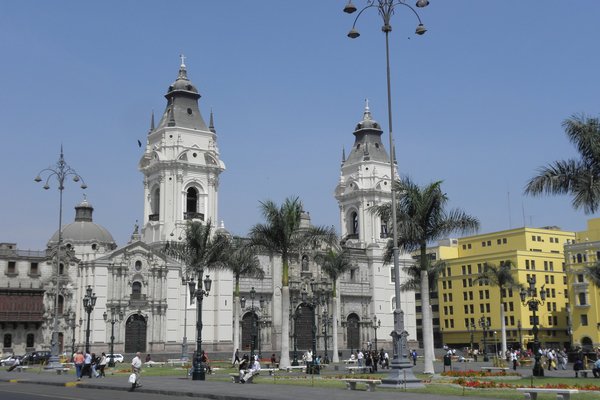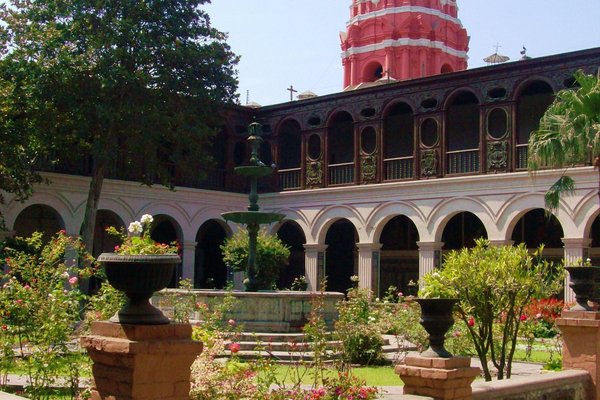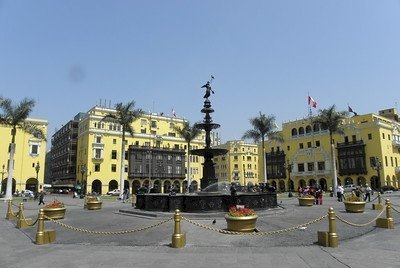Peru
Lima
The Historic Centre of Lima has been a leading city in the New World since its foundation in 1535 by Spanish conquistador Francisco Pizarro.
The centre covers both banks of the river Rimac and holds numerous religious and public buildings that date from the 17th and 18th centuries when Lima was the capital of the Viceroyalty of Peru. Its San Francisco de Lima is one of the most complete and outstanding convents of the colonial era.
Community Perspective: Lima gets a lot of mixed reviews: “There are colonial remnants if you look for them”, but it “lacks a truly iconic building, monument or landmark”.
Site Info
Official Information
- Full Name
- Historic Centre of Lima (ID: 500)
- Country
- Peru
- Status
-
Inscribed 1988
Site history
History of Lima
- 1991: Extended
- From the convent ensemble of San Francisco to the whole historic city centre
- 1988: Inscribed
- Inscribed
- Type
- Cultural
- Criteria
- iv
Links
- UNESCO
- whc.unesco.org
- Official
-
- peru.travel — Peru Travel
All Links
UNESCO.org
- whc.unesco.org — whc.unesco.org/
Official Website
- peru.travel — Peru Travel
News Article
- Aug. 8, 2025 perureports.com — The revival of Lima’s historic center: a Master Plan with a 2035 vision
- Jan. 21, 2023 bbc.com — Historic building in Lima catches fire as protests continue
- Nov. 7, 2012 cbc.ca — Casona El Buque, heritage site in Lima, collapsed after its structure was weakened by a fire
Community Information
- Community Category
- Urban landscape: Colonial
Travel Information
Recent Connections
-
Perfect Inscriptions
1988 -
Minor modifications after inscription
2023: To incorporate six monuments loca… -
Works by Nobel Prize winning authors
“La ciudad de los perros” from Nobel pr…
Connections of Lima
- Individual People
-
-
Visited by Alexander von Humboldt on his travels
He was in Lima 22 Oct - Dec 24 1802 -
Francisco Pizarro
Founder, and died there -
Charles Darwin
1835 July 19; H.M.S. Beagle arrived at Lima, Peru. Darwin looked around the city and was shocked at the state of decay all around him. The next few weeks were spent taking on provisions for the trip across the Pacific ocean
-
- Geography
-
-
Pacific Ocean
-
Located in a Capital City
Lima (Capital of Peru) -
Pan-American Highway
The highway runs through the city, including the historic center
-
- Trivia
-
-
On Banknotes
Palais Concert on 50 Nueva Soles note; Palace "Torre Tagle" on 20 Nueva Soles note; Convent of Santo Domingo on the back of 200 Nueva Soles note -
Built or owned by French
Casa CourretSee elcomercio.pe
-
Built or owned by Spanish
On November 3, 1536, the Spanish Crown confirmed the founding ... Lima's first university, Saint Mark University was established in 1551 and its first printing press in 1584. (wiki) -
Major City Centres
7.6 million/200ha
-
- History
-
-
The Inquisition
The Inquisition operated from a1570-1820 in a building which later became the Senate and now houses the Museum of the Inquisition (Junin 548 -3 blocks from Cathedral). -
Assassinations
Pizarro's Palace (Now Government Palace in the main square) - Pizarro (June 26 1541) -
Qhapaq Nan (Inca)
-
- Architecture
-
-
Baroque
... are typical examples of Hispano-American Baroque (AB ev) -
Churrigueresque
Basilica of Our Lady of Mercy Cathedral -
Mudejar style
Ceilings in the Iglesia de San Francisco -
Art Nouveau
Casa CourretSee elcomercio.pe
-
Neoclassical architecture
Several altarpieces in the Cathedral, Facade of Municipal Palace, Inside patio of Casa Negreiros -
Glazed tiles
The Monastery of San Francisco had an azulejos workshop (AB ev), and there are still several in situ at both the Monastery and the Cathedral
-
- Damaged
- World Heritage Process
-
-
Perfect Inscriptions
1988 -
Inscribed on a single criterion only
iv. to be an outstanding example of a type of building, architectural or technological ensemble or landscape which illustrates (a) significant stage(s) in human history -
Extended
1991: From the convent ensemble of San Francisco to the whole historic city centre -
Minor modifications after inscription
2023: To incorporate six monuments located within the buffer zone. From these, four are adjacent to the property’s boundaries: Prado or “del Corcovado” House, San Bartolomé Hospital, Nuestra Señora del Prado Church and Monastery, Santa Rosa de Santa Maria Church and Monastery; and two are separate areas: Ancient Indigenous Reduction of Santiago Apostle of Cercado and Quinta and Molino de Presa. It now becomes a serial property composed of three serial component parts: Historic Centre of Lima, Ancient Reduction of Santiago Apostle of Cercado and Quinta and Molino de Presa.
-
- Religion and Belief
-
-
Franciscan Order
Monastery of San Francisco -
Cathedrals
Cat Bas St Juan Apostol -
Mercedarians
"As old as the city of Lima are the Convent and the Church of La Merced. According to ancient chronicles state that the land on which is built the Convent and Church and belonged to the Mercedaria order.....The Mercedarios is one of the religious orders that came to catechize the conquered peoples in Peru" (Wiki)
-
- Human Activity
-
-
Cuzco School of Painting
Cathedral -
Changing of the Guard ceremonies
Ceremony performed daily starting between 11:45 and noon in front of the Presidential Palace. -
Historical Bullrings
Plaza de toros de Acho (1766) -
Mummies
Body of Pizarro
-
- Constructions
-
-
Ossuary
Monastery of San Francisco -
Cemeteries
The ossuary in the Convent of San Francisco was Lima's first general cemetery -
Equestrian Statues
Pizarro, Lima City Walls Park behind the Convent of San Francisco. Was located in Plaza des Armas until 2002 but was moved in response to indigenous opposition. Also not really of Pizarro! See Link. Bolivar - Legislative Palace (1859). Erected when the Plaza del a Inquisicion was renamed - replica of statue in Caracas. -
Catacombs
Under San Fransisco Convent -
Tomb of the Unknown soldier
Plaza Bolivar "Contains the remains of a soldier who died in 1881 during the War of the Pacific" (Wiki) -
Monumental Fountains
Bronze fountain at Plaza de Armas (1650)
-
- WHS on Other Lists
-
-
World Monuments Watch (past)
Lima - Historic City Center (2008)
-
- Timeline
-
-
Built in the 16th century
Founded in 1535
-
- Science and Technology
-
-
Universities
University of San Marcos (1551) -
Early Printing
First print shop in 1584
-
- Literature & Film
-
-
Works by Nobel Prize winning authors
“La ciudad de los perros” from Nobel prize winner Mario Vargas Llosa (2010) takes place in Lima.
-
News
- perureports.com 08/08/2025
- The revival of Lima’s historic cen…
- bbc.com 01/21/2023
- Historic building in Lima catches …
- cbc.ca 11/07/2012
- Casona El Buque, heritage site in …
Recent Visitors
Visitors of Lima
- AC
- Adrian Turtschi
- Albert
- Alberto Rodriguez Gutierrez
- Alejandro Lau
- alex
- Alexander Barabanov
- Alexander Lehmann
- Alexander Parsons
- AlexSchedel
- Ali Zingstra
- ALS
- A. Mehmet Haksever
- Ammon Watkins
- Ana
- Ana Lozano
- Andrea Szabo
- Angela Vandyck
- Anna Wludarska
- Anne
- Argo
- Artsybrea
- Artur Anuszewski
- Aspasia
- Atila Ege
- Bamse
- basementonline
- Bauchat
- BaziFettehenne
- BenReeve
- bergecn
- Bill Maurmann
- Bin
- Bram de Bruin
- Carlo Medina
- Carlo Sarion
- Carlos Sotelo
- cflw
- Chantal den Haan
- chenboada
- Chinmaya
- chiuliqi
- ChrisN
- Christravelblog
- Cirene Moraes
- Claire Bradshaw
- Clyde
- Col
- Colossus
- Corinne Vail
- Crinion
- Cristina Erba
- Csaba Nováczky
- CynthiaSam
- CynthiaW
- czesioszpachelka
- daneva
- Daniela Hohmann
- Daniel Chazad
- Daniel Gabi
- Danieljbromberg
- dave wood
- David Marton
- David Scott King
- del
- Delphine Delaunay
- Dennis Nicklaus
- Dimitrios Polychronopoulos
- Dirk-pieter
- DouglasR
- Dwight Zehuan Xiao
- Els Slots
- emvcaest
- Erfe91
- Erik Jelinek
- Eva Kisgyorgy
- Fan Yibo
- Feldhase
- Felicité
- Fernweh
- Filip Murlak
- Francky D'Hoop
- Frédéric M
- Frederik Dawson
- Gabbro
- GabLabCebu
- Geert Luiken
- George Gdanski
- Gilles
- giloudepuertorico
- giulio25
- Hammeel
- HaraldOest
- Harald T.
- Harry Mitsidis
- H Beswick
- Hdhuntphotography
- Hdwilsonau
- headventure
- hotpickle
- Hughes1920
- Hunstow
- Iain Jackson
- Ilya Burlak
- IreneKD
- irosey
- Jacob Choi
- janis
- Janos
- Jan Zimmermann
- Jarek Pokrzywnicki
- Jasonfd247
- Javier Coro
- Jayme Arnao
- Jay T
- jballard650
- Jens
- JL
- J_neveryes
- João Aender
- Joel on the Road
- John Smaranda
- Jonas Kremer
- jonathanfr
- Jon Eshuijs
- Jon Opol
- JoStof
- Joyce van Soest
- JR's HERITAGE SITES
- Juha Sjoeblom
- Justin
- KarenBMoore
- Karito Vies
- Kasper
- Kayimi
- Kbecq
- KeithBailey
- Kelly Rogers
- kelseyyurek
- Kevin McFarland
- kiank37
- Kjlauer
- Kjsisney
- Krijn
- Kurt Lauer
- Kyle Magnuson
- Lameduck99
- leroykstlj
- Liamps91
- lindaann
- Linz
- Little Lauren Travels
- Loic Pedras
- Lucio
- Ludvan
- Luis Filipe Gaspar
- Lukasz Palczewski
- lynnz317@aol.com
- Maciej Gil
- Malgorzata Kopczynska
- manuel011197
- Mariam
- Marlies van Wolfswinkel
- Martin
- maryhattie
- Mathijs
- Matthewsharris
- M.HATADA
- Michael Ayers
- MichaelH
- Michael Novins
- michaelsballard
- Michael Turtle
- Mihai Dascalu
- Mikko
- Milan Jirasek
- MMM
- Monica Tasciotti
- montgomw
- Morodhi
- MWaters66
- Naim Y
- nan
- natlefebvre@hotmail.
- Niall Sclater
- Nicolas
- Nicole Lampos
- Nihal Ege
- PabloNorte
- Palimpsesto
- Patrik
- Paul Schofield
- Pchxiao
- Philipp Leu
- Philipp Peterer
- phillipmeng
- Pierre T
- Pink Bunny
- Piotr Wasil
- Pradip Tripathy
- pressdm
- Priyaranjan Mohapatra
- Rafabram
- Ralf Regele
- Ralf Rotheimer
- Randi Thomsen
- Reisedachs
- Reza
- Riccardo Quaranta
- Rob Wilson
- Roman Bruehwiler
- RYU
- Sabrina Liebehentschel
- sakohju
- Samy G
- Sandmann15
- Sandra!
- sbshipway
- Sclowitz
- Sergio Arjona
- Shandos Cleaver
- Shombob
- sibariam
- Simonf
- Slavi
- Solivagant
- Sorel Americo
- Spike Zou
- Squiffy
- Ssong.x
- Stanislaw Warwas
- Stefan Loov
- stephanvermeulen
- Sutul
- Svein Elias
- Szabolcs Mosonyi
- Szucs Tamas
- Tatiana Nikulnikova
- Tcchang0825
- Tevity
- TheTravelingRanger
- Thomas Buechler
- Thomas van der Walt
- Tim Allen
- Timonator
- Timothy C Easton
- TimPick
- Tinuszke
- tony0001
- Traveling Girl
- Vernon Prieto
- vhorne
- Viaje al Patrimonio
- vino4vino
- V&M
- Walter
- Waters88
- Wojciech Fedoruk
- Xiquinho Silva
- Yongcheng Liu
- Zach
- zfish
- Zizmondka
- Zoë Sheng
Community Reviews
Show full reviews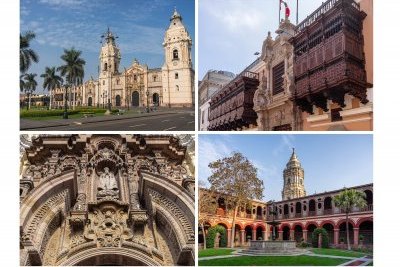
My trip to Peru in May 2024 had two full-day bookends in Lima, which gave me plenty of time to explore the historic center. I share the opinion that you can find more impressive ensembles elsewhere. "Ensemble" is the key word here. While there are plenty of eye-catching details, they do not add up to a consistent overall picture. Nor is there a killer must-see feature, as has already been stated.
Plaza de Armas and the San Francisco Convent are the main attractions, and the library at Santo Domingo is as impressive as any old library elsewhere. With good timing and extra effort, you can step inside historic palaces, such as Palacio de Torre Tagle or Casa de Aliaga, which are not without interest. The balconies throughout the historic center are the main visual highlights. The Mestizo Baroque church portal at La Merced rivals that of San Francisco. Plus, there is a Modernist façade or two and plenty of splashes of color everywhere, as is common in colonial architecture.
Unlike some previous reviewers, I encountered the main plaza completely off-limits to vehicular traffic. At noon, there was a changing of the guard at the Presidential palace, which started as a slow and tedious ceremony but eventually broke into a 15-minute routine of military choreography, performed to the medley of popular songs anchored by El Cóndor Pasa (which I never knew was written by a Peruvian composer).
I was advised by a tour guide not to go across …
Keep reading 0 comments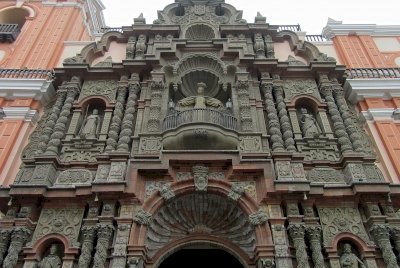
Lima is a great city to explore -- I must state that up front -- but the central historic district which composes the World Heritage Site was not as impressive to me as other historic districts I have visited in Latin America, such as Mexico City or Quito. Walking through the district in October 2018, I made brief stops in Plaza San Martin, centered around a statue of its eponymous hero on horseback, and the Iglesia de La Merced, with its neat baroque facade, before making my way to the more charming Plaza Mayor. This plaza turned out to be the most fascinating of the historical sites I saw in the city center (to include the San Francisco Convent); perhaps it was because the sun finally came out to shine on the yellow-walled mansions with box balconies surrounding the square, or perhaps it was the unexpected military band playing in front of the palace. That said, my best memories of Lima aren't from the historic center, but rather from exploring around the coastal Miraflores and Barranco neighborhoods, walking through the Magic Fountains at night, hiking around the Pachacamac pyramids outside the city, and enjoying an excellent dinner overlooking the ruins of Huaca Pucllana. Lima as a whole is certainly worth a visit.
Logistics: Lima's historic center is very walkable; it is also accessible from many other parts of the city by bus.
Keep reading 0 comments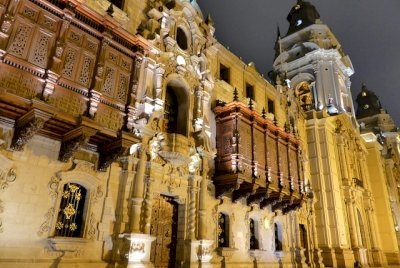
I visited this WHS in June 2019 and stayed a total of 5 nights here using it as my base for several short and long day trips to other WHS. To be fair, I wasn't expecting much from Lima and I chose to visit during 'garua' season as it happens to be the best season for the highlights of Peru further South.
That said, I couldn't not compare it to other WHS I had visited 'close' by such as Quito and Panama Viejo which were definitely better overall and more of an ensemble than the Peruvian capital. Lima's biggest problem is traffic, which doesn't even spare the main attraction of this WHS, Plaza de Armas. I enjoyed my numerous visits to the lively square at different times of the day and overall I enjoyed it the most in the evening when several 'cultural shows' took place to celebrate Afro-Peruvian communities. My personal highlight were the ornate wooden balconies of the Archbishop's Palace (photo) and the Torre Tagle Palace.
Moreover, Lima lacks a truly iconic building, monument or landmark and the majority of the places of interest are merely worth visiting but nothing very special, certainly not of outstanding universal value or unique. The Cathedral with Pizarro's tomb, St Martin's square, San Marcos Mansion's interior, the Rimac district, the Barrio Chino, the Santo Domingo Convent and Museum, the Government Palace, etc. are worth seeing but none would be must-sees to justify a revisit (if not a visit in the …
Keep reading 0 comments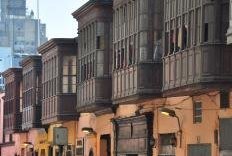
I was really surprised that many people did not like Lima, since I really enjoyed this city and maybe one of the most surprising places I have seen during my one-month trip in South America. Maybe because of this year El Nino, Lima I have seen was very bright with clear sky, so bright that even locals admitted that this kind of sunshine rarely happened. One of the most outstanding features of Lima’s historic center is the vibrant of architectural styles from pure colonial Spanish baroque, lovely art nouveau, and even neo-classical that almost make Lima to be little Madrid.
As a World Heritage Site enthusiast, Basilica de San Francisco was the first place I went to see as this basilica is the original reason why Lima has been put on the list. The grand Basilica is located in the center of the old district. The highlights of the Basilica are the Catacomb and the ceilings of the Basilica complex. The catacomb is very interesting however I am not a fan of dark tourism, so I was happy to just a brief look. But the ceilings of church and monastery are really beautiful from indigenous design to Moorish inspired dome. Really a nice place but I am not sure that from present ICOMOS standard, the site can be inscribed by their own merit, and I was far more appreciate from the rest of the old city. After Basilica, I went to see the City Cathedral, maybe I had …
Keep reading 0 comments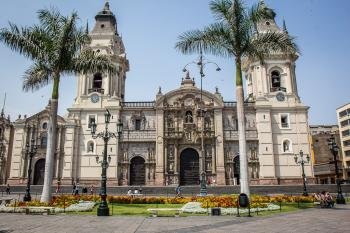
I was surprised to bump into quite a few tourists in Lima who couldn't be bothered to go to the historic part of the city - they thought it would be boring and/or unsafe and preferred to stay around the beaches and the touristy areas. I think they missed out!
There are some really beautiful buildings here and you can easily spend a day checking them out and having a relaxed meal or drink in one of the squares.
My two highlights - and must sees for everyone - are the Monastery of San Francisco and the main cathedral. They are absolutely stunning inside. Don't miss the tomb for Pizarro in the cathedral.
Keep reading 0 comments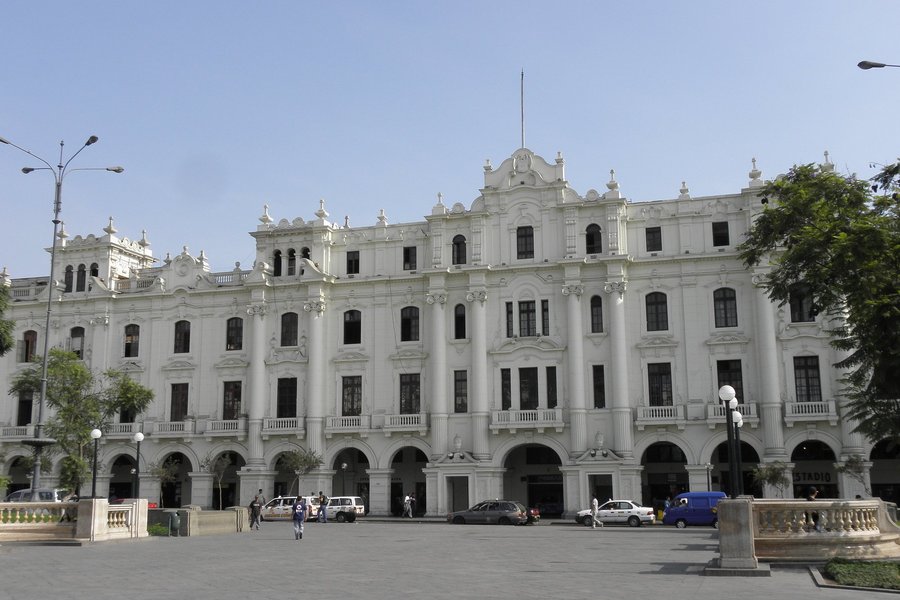
Lima was my first impression of Peru, and I was pleasantly surprised by it. The city nowadays has a quite prosperous feel to it, and a fancy new bus system that works like a metro (El Metropolitano) makes travelling around safe and easy. Even the fog that famously covers Lima for most of the year was replaced by a bright blue sky when I visited.
The Plaza de Armas is probably the most “central” place in the historic centre. It’s a major crossroads too, so it’s not totally relaxed for pedestrians. The square is covered on all sides by historic buildings. It is here that I first noticed the elaborate wooden balconies, which are common in Lima’s old colonial structures. The archbishop’s palace has one of the best of all.
Next door is the Cathedral. It does look pretty standard Latin American Baroque from the outside, but inside, there are several gems. The first chapel holds the bones of Pizarro and some beautiful clear mosaics. The Chapel of Our Lady of the Evangelization (renamed so by Pope John Paul II, we should try to make a Connection with him as he has left his mark all over the globe!) is a masterpiece in turquoise and gold colouring. Other chapels have finely sculptured wooden altars, and the main altar is not to be missed either.
The best sight in the centre still is the Convent of San Francisco. Before the WHS got extended to include the whole of Lima's city centre, …
Keep reading 0 comments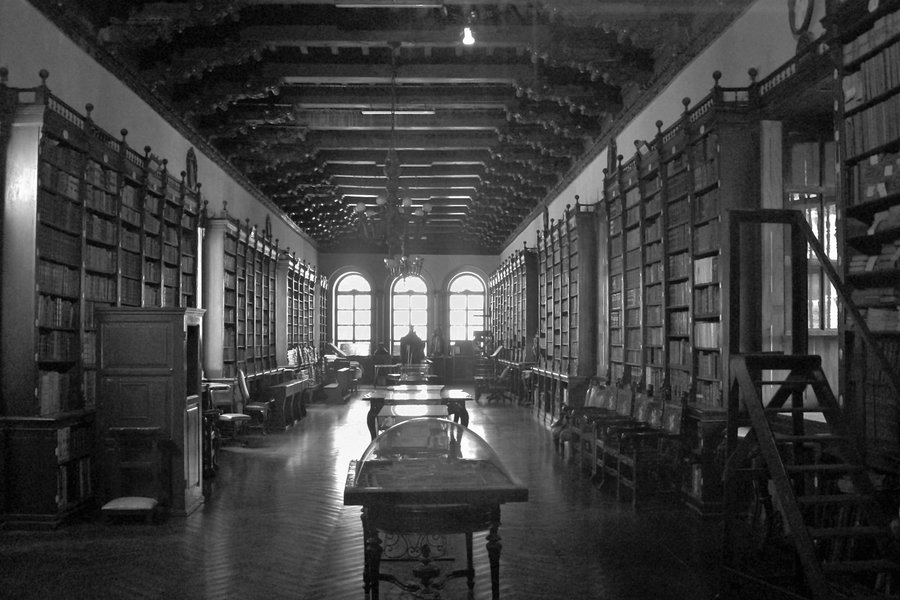
Updated Review: January 2024
For visitors to Lima, the new 2023 Map will come in useful! The map of the inscribed area is 18.5 ha larger than the 2013 map thanks to recent boundary modifications and includes some non-contiguous areas. When I visited in 2009 there was no sufficient map at all! Els first mentioned this boundary modification (and others) in her Fall 2023 Blog post.
Besides the sites around the The Plaza de Armas, the highlight of my exploration of Lima was the 'Basilica and Convent of Santo Domingo' (Museo Santo Domingo). The courtyard, the tile work, the library all made this historic site the most lasting memory of Lima for me. The Basílica and Convent of San Francisco and the San Agustin Church were also noteworthy stops.
A ICOMOS Mission Report in 2017 demonstrated Peru's progress in protecting archaeological sites in Lima such as the 'Site Museum Bodega y Quadra' which opened in 2012 and the 'Parque de la Muralla' which includes some of the archeological remains of Lima's City Wall. I was completely unaware of both sites in 2009.
Is there more to see than we thought in Lima? Would it improve our 'community perspective' at all? With the new map and specifically the 'Site Museum Bodega y Quadra' to visit, I think Lima deserves a return visit. There has not been any new reviews since 2019. Two other historic sites also sparked my interest. The Quinta Del Marques De Presa looks impressive (see …
Keep reading 0 comments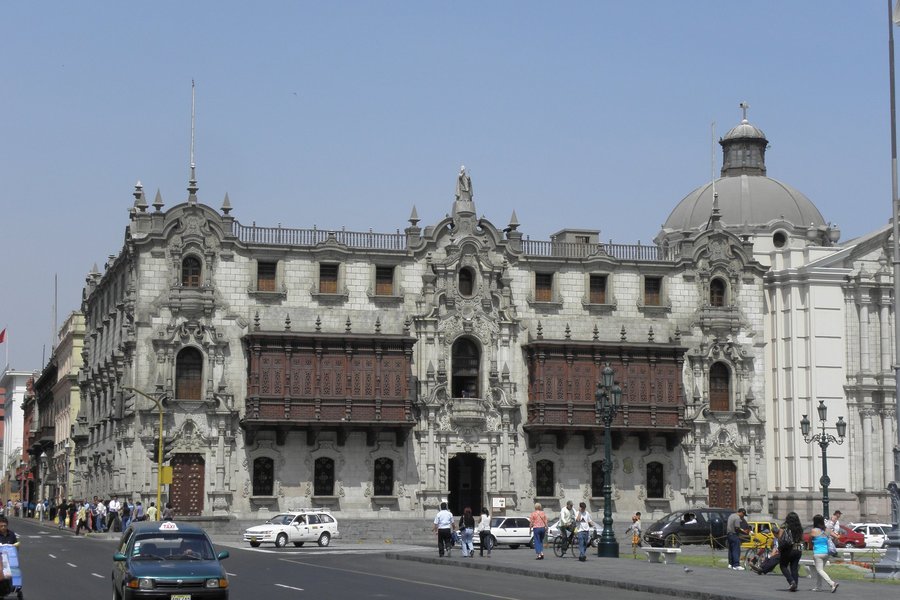
Whilst there are some interesting things to see in Lima, it is very difficult to believe that the city deserves its WHS status. The Monastary of San Francisco is very interesting, but much else stands out.
There are plenty of old colonial cities on the WHS list, and there are plenty that are not that are much nicer than Lima.
However, for WHS list tickers it is an easy site to 'bag' as it is the gateway for the rest of Peru, and the other sites in this wonderful country are magnificent!
Keep reading 0 comments
My memories of Lima are rather vague - having just had a nightmare journey from the UK. Yes it is a grubby, run down and in someplaces poverty wracked city.
But what I do remember was a fairly pleasant afternoon viewing the central colonial squares, which whilst nice are put in the shade by Arequippa. The Gold Museum was interesting not so much for the gold, but for the exquisite pre-columbian fabrics upstairs.
But for me the highpoint was the 'Lord of Sipan' at the National Museum, whose treasures were every bit as good as King Tuttankahmun's. Although I am told thes have now been moved to a purpose built museum where they were excavated.
Verdict - look beyond the grubbiness of the city itself and there are some real gems to be seen.
Keep reading 0 comments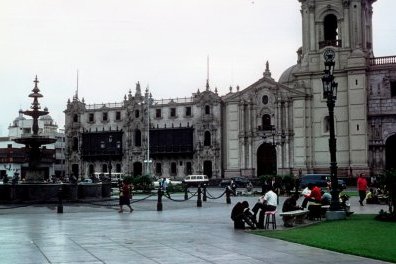
Is there no one out there prepared to write a (positive?) review of the “Historic Centre of Lima”? Lima has a poor reputation among tourists – I have not even been able to find a “good” photo of my own (from visits in 1973 and 84!) and thus present a rather mediocre one of the Plaza de Armas on a typical grey Lima day – looking very dull in the “garua” mist which covers the city for much of the year.
But, if you visit Peru (Which is a wonderful destination - it is perhaps my favourite country for its “variety” of sights - historic, ethnic, scenic (mountains, desert, and jungle) and wildlife) you will have to come to terms with Lima as the port of entry, the transport hub and home for a third of Peru’s population.
Does it justify its WHS status? Well there are colonial remnants if you look for them. Its cathedral in the Plaza de Armas contains the (possible?) remains of Pizarro, there are also a few mansions/houses and a fine monastery but Cuzco and Arequipa maintain more of a colonial atmosphere. I feel it must have been inscribed as much because of its place in colonial history as because of what remains now.
There are some good museums which will complement what you have already or are about to see up-country. I operate a rule of thumb scale of 0-3 days for assessing how long to give a city within a …
Keep reading 0 comments
